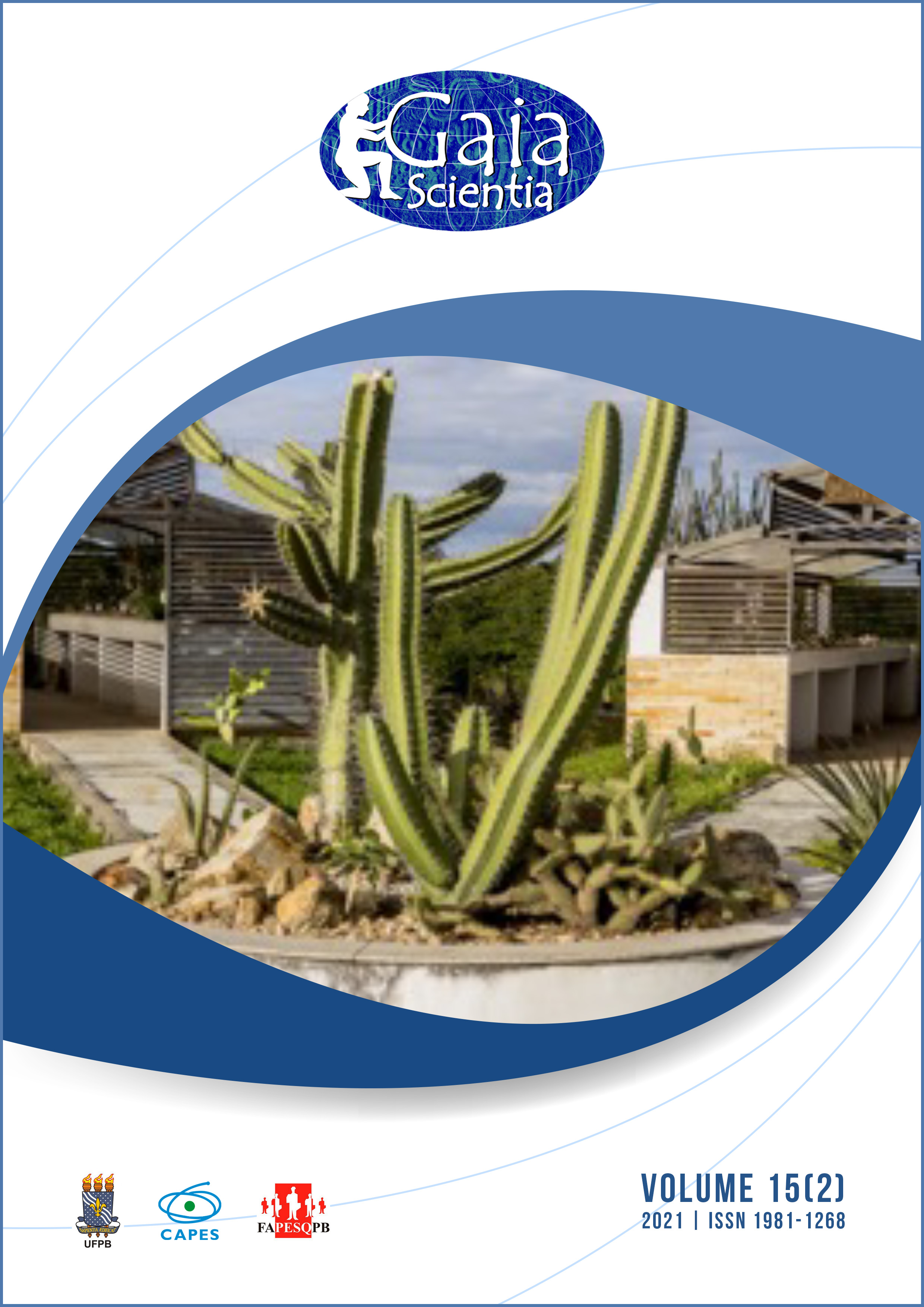Floss silk tree sapling production in substrates with kaolin industry rejects
DOI:
https://doi.org/10.22478/ufpb.1981-1268.2021v15n2.55146Abstract
The use of kaolin rejects in substrates for sapling production may constitute a viable alternative for the use of this material. This study was carried out to evaluate the production of floss silk tree (Ceiba speciosa (A. St.-Hil.) Ravenna) saplings in substrates with different proportions of kaolin rejects. The following substrates were evaluated: S1: 40% vegetal soil (VS) + 30% cattle manure (CM) + 30% washed sand (WS) + 0% kaolin rejects (KR); S2: 40%VS+30%CM+0%WS+30%KR; S3: 40%VS+20%CM+0%WS+40%KR; S4: 40%VS+10%CM+0%WS+50%KR; S5: 30%VS+10%CM+0%WS+60%KR; S6: 20%VS+10%CM+0%WS+70%KR; and S7: 10%VS+10%CM+0%WS+80%KR. Seventy-five days after planting, the lap diameter, height, leaves number, dry mass production (root, aerial part and total), height/lap diameter ratio, dry mass of aerial part/dry mass of root ratio and Dickson Quality Index were statistically evaluated. The substrates S1 and S2 were responsible for statistically superior results for all evaluated characteristics of floss silk tree saplings. The other substrates resulted in statistically significant reductions on seedlings characteristics, especially the substrates S6 and S7. For the production of floss silk tree seedlings, a proportion of up to 30% of kaolin rejects can be used in the substrate without negative effects on the saplings’ growth and quality.










